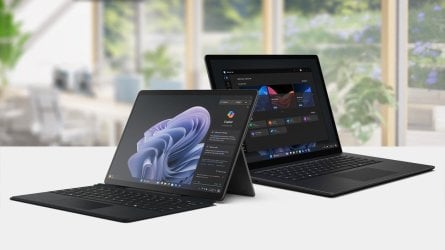Microsoft’s AI-powered Copilots are changing the way we work, making customers more efficient while unlocking new levels of creativity. While these transformative tools open doors to new possibilities, they are also raising new questions. Some customers are concerned about the risk of IP infringement claims if they use the output produced by generative AI. This is understandable, given recent public inquiries by authors and artists regarding how their own work is being used in conjunction with AI models and services.
To address this customer concern, Microsoft is announcing our new Copilot Copyright Commitment. As customers ask whether they can use Microsoft’s Copilot services and the output they generate without worrying about copyright claims, we are providing a straightforward answer: yes, you can, and if you are challenged on copyright grounds, we will assume responsibility for the potential legal risks involved.
This new commitment extends our existing intellectual property indemnity support to commercial Copilot services and builds on our previous AI Customer Commitments. Specifically, if a third party sues a commercial customer for copyright infringement for using Microsoft’s Copilots or the output they generate, we will defend the customer and pay the amount of any adverse judgments or settlements that result from the lawsuit, as long as the customer used the guardrails and content filters we have built into our products.
You’ll find more details below. Let me start with why we are offering this program:
More details on our Copilot Copyright Commitment
- We believe in standing behind our customers when they use our products. We are charging our commercial customers for our Copilots, and if their use creates legal issues, we should make this our problem rather than our customers’ problem. This philosophy is not new: For roughly two decades we’ve defended our customers against patent claims relating to our products, and we’ve steadily expanded this coverage over time. Expanding our defense obligations to cover copyright claims directed at our Copilots is another step along these lines.
- We are sensitive to the concerns of authors, and we believe that Microsoft rather than our customers should assume the responsibility to address them. Even where existing copyright law is clear, generative AI is raising new public policy issues and shining a light on multiple public goals. We believe the world needs AI to advance the spread of knowledge and help solve major societal challenges. Yet it is critical for authors to retain control of their rights under copyright law and earn a healthy return on their creations. And we should ensure that the content needed to train and ground AI models is not locked up in the hands of one or a few companies in ways that would stifle competition and innovation. We are committed to the hard and sustained efforts that will be needed to take creative and constructive steps to advance all these goals.
- We have built important guardrails into our Copilots to help respect authors’ copyrights. We have incorporated filters and other technologies that are designed to reduce the likelihood that Copilots return infringing content. These build on and complement our work to protect digital safety, security, and privacy, based on a broad range of guardrails such as classifiers, metaprompts, content filtering, and operational monitoring and abuse detection, including that which potentially infringes third-party content. Our new Copilot Copyright Commitment requires that customers use these technologies, creating incentives for everyone to better respect copyright concerns.
The Copilot Copyright Commitment extends Microsoft’s existing IP indemnification coverage to copyright claims relating to the use of our AI-powered Copilots, including the output they generate, specifically for paid versions of Microsoft commercial Copilot services and Bing Chat Enterprise. This includes Microsoft 365 Copilot that brings generative AI to Word, Excel, PowerPoint, and more – enabling a user to reason across their data or turn a document into a presentation. It also includes GitHub Copilot, which enables developers to spend less time on rote coding, and more time on creating wholly new and transformative outputs.
There are important conditions to this program, recognizing that there are potential ways that our technology could intentionally be misused to generate harmful content. To protect against this, customers must use the content filters and other safety systems built into the product and must not attempt to generate infringing materials, including not providing input to a Copilot service that the customer does not have appropriate rights to use.
This new benefit doesn’t change Microsoft’s position that it does not claim any intellectual property rights in the outputs of its Copilot services.
We have published more details of the Copilot Copyright Commitment for customers and welcome the opportunity to have further conversations as Copilots become more widely available.
Our shared AI journey
Today’s announcement is a first step. Like all new technologies, AI raises legal questions that our industry will need to work through with a wide array of stakeholders. This step represents a pledge to our customers that the copyright liability of our products is ours to shoulder, not theirs.
Microsoft is bullish on the benefits of AI, but, as with any powerful technology, we’re clear-eyed about the challenges and risks associated with it, including protecting creative works. It is our responsibility to help manage these risks by listening to and working with others in the tech sector, authors and artists and their representatives, government officials, the academic community, and civil society. We look forward to building on such announcements with new initiatives that help ensure that AI advances the spread of knowledge while protecting the rights and needs of creators.
Source:

Microsoft announces new Copilot Copyright Commitment for customers - Microsoft On the Issues
With customers ask whether they can use Microsoft’s Copilot services without worrying about copyright claims, we are providing a straightforward answer: yes, you can, and if you are challenged on copyright grounds, we will assume responsibility for the potential legal risks involved.
























